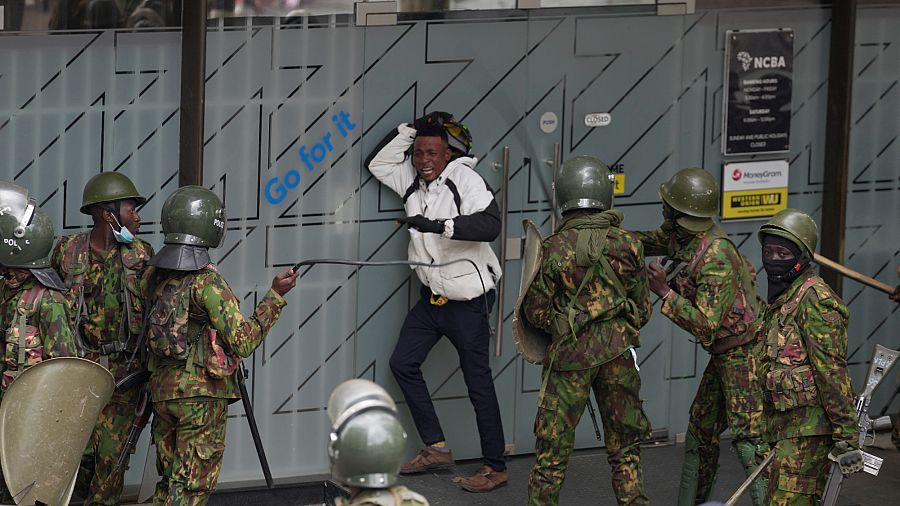Protests Erupt Across Kenya as Citizens Commemorate Victims of Previous Clashes
In a significant display of civil unrest, thousands of Kenyans took to the streets this past week to honor the memory of individuals who lost their lives during a series of protests against heavy taxation last year. The demonstrations unfolded in various cities, notably in the capital, Nairobi, where security forces responded with water cannons and strategic barricades to manage the crowds that demanded accountability for the actions that led to these violent events.
The Background of the Protests
The protests were ignited by a perceived lack of justice for those who lost their lives in the anti-tax demonstrations, prompting citizens to rally in collective grief and anger. Many participants carried placards highlighting the need for reform and remembrance, making it clear that the fight against oppression and imposition of unfair taxes continues.
Activists and community leaders have stated that these protests are not just about remembering the past but also about pushing for changes that ensure such tragedies are not repeated. The event serves as a stark reminder of the ongoing struggles faced by Kenyans in advocating for their rights.
Security Measures in Place
In anticipation of possible violence, the Kenyan authorities deployed a robust security presence across key locations in Nairobi. Armed forces set up barricades to control the flow of people and deployed water cannons in strategic locations. This pre-emptive measure reflects the government’s intent to maintain order amid growing tensions.
Despite these precautions, clashes were reported in several areas as demonstrators attempted to breach police lines. Reports from the ground indicate that some protesters responded to the security forces’ measures with defiance, leading to moments of chaos as crowds surged against barricades.
Voices from the Streets
The atmosphere on the ground was charged, with many voices calling for a reassessment of government policies, particularly those related to taxation and revenue generation. Resident Ian Wafula, provided coverage from the heart of the protests, emphasizing the palpable frustration among Kenyans who feel their voices are not being heard.
“We are here to demand justice and ensure that those who lost their lives do not die in vain. Our voices should matter in how this country is run,” stated a protester who wished to remain anonymous.
Public Sentiment and Future Implications
The strong turnout reflects a deep-seated discontent among the population regarding the socioeconomic landscape of the country. Many people express that the protests are symbolic of a larger struggle against systemic issues that hinder progress.
The government’s approach to handling the protests may have lasting implications. As tensions remain high, observers anticipate further actions from both governmental bodies and civil society as they navigate this complex environment. It remains evident that without meaningful dialogue, the cycle of protest and unrest may continue.
Statistical Overview of Protests
| Key Metrics | Details |
|---|---|
| Date of Protests | April 2025 |
| Major Cities Involved | Nairobi, Mombasa, Kisumu |
| Number of Participants | Thousands |
| Government Response | Deployment of water cannons and police barricades |
As the protests continue to evolve, the aspirations and demands of the Kenyan people will likely shape the national dialogue in the coming months, drawing attention from both domestic and international communities.


